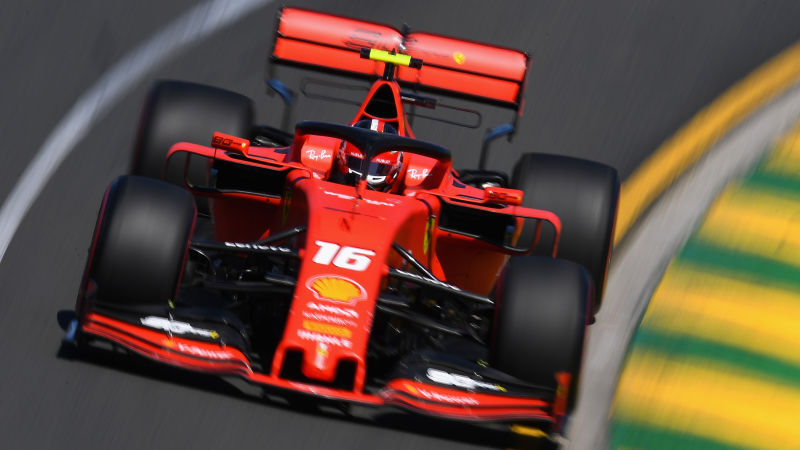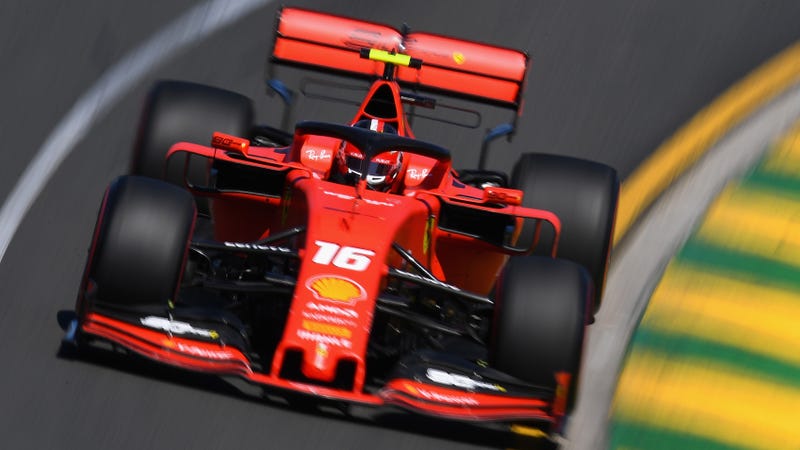This weekend heralds the kick-off of the 2019 Formula One season, and it’s time to get back in the swing of watching beautiful race cars at ungodly hours of the morning! Whether you’re a longtime fan who tunes out of the F1 circus during the off-season or a new fan interested in trying something new, we have you covered with all you need to know to get up to speed before cars hit the track on race day.
2019 wasn’t one of F1’s big rule change years, but it’s had a good amount of alterations ahead of the official 2021 changes. This time around, The Powers That Be opted for some alterations that should enable better racing and more overtaking—something every race series could use more of.
Driver Changes
It’s pretty difficult to make any predictions heading into this season because of how many driver changes have taken place over the off-season. I’ll admit, one of my biggest pet peeves over the past few years has been the lack of new talent making its way into F1. Its teams must have been listening to my bitching into the blogosphere, because 2019’s grid is a shakeup in the best possible way.

Advertisement
Check it out—six of the 20 drivers in 2019 didn’t compete full-time in F1 the previous season. That in itself is exciting because we have no idea how some of these drivers will perform at the pinnacle of auto racing. Only eight drivers have remained in the same seat at the same team as 2018 shifts into 2019.
And that’s not all. There have been some drastic driver shifts among the experienced drivers, too. Longtime F1 fans will notice that Alfa Romeo has swapped out Charles Leclerc for Ferrari’s Kimi Räikkönen—which seems a little bit like a demotion for the Finnish driver (who, for his own part, seems to be enjoying life without Ferrari’s politics).
Advertisement
Daniel Ricciardo is saying goodbye to the increasingly-weird long-term relationship that was Red Bull Racing in favor of the surprisingly ambitious Renault. Meanwhile Pierre Gasly is moving up from Red Bull’s junior Toro Rosso team to partner Max Verstappen at RBR proper. That means Toro Rosso’s lineup is entirely different from 2018—rookie Alexander Albon is taking a stab at F1, and Daniil Kvyat is back for a second chance after, uh, a less-than-sparkling first chance.
All these changes mean the grid is pretty much composed of wild cards—which promises to make for an interesting start to an unpredictable season.
Advertisement
Teams and Drivers to Watch
My money is on another Mercedes sweep this year, but it will be interesting to see how Ricciardo does at Renault, how young Leclerc does at Ferrari, and how Kubica does getting back into wheel-to-wheel F1 racing years after his grisly rally crash that nearly claimed one of his hands.
The first two practices for this season took place in the wee hours of the night, and Mercs topped both sessions, picking up right where they left off. But I’m thinking that the ever-emotive Valtteri Bottas might just be more competitive this year. He was one of the drivers suffering from the shitty weight regulations. Now that he can eat a sandwich again, I have a feeling he’s going to become someone to watch.
Advertisement
That said, Red Bull and Ferrari are both going to be usual suspects this year, competing for a spot on the podium. Practice sessions have suggested that Red Bull might have the upper hand over Ferrari, as opposed to the 2018 season. Never count out Sebastian Vettel, though—if there’s anyone who can pull max performance out of a car, it’s the four-time World Champion.
What’s Different This Year
More Overtaking
Several aspects of the aerodynamics of the car have been changed: front and rear wings, the barge board, and brake ducts.
Advertisement
Basically, both wings have been made wider, higher, and more simplified. This should make for closer racing. The simpler design means air is basically just directed straight into downforce. While some teams have complained that this is going to make for slower cars, testing has shown that any changes in speed haven’t been noticeable.
It’ll be a fun test this year to see if F1 as an organization can really do anything to make on-track action more exciting, or if the teams will engineer around the rules like always.
Drivers Can Eat Meals Again
In the past, an F1 car’s weight was measured by weighing the car with the driver inside. That meant that taller, heavier drivers were at a disadvantage—they always had to stay slim, which was bad news for anyone who put on muscle or ate a meal during the season. Now, thankfully, drivers will be weighed separately of their cars.
Advertisement
The minimum weight of the car has increased from 1,616 lbs to 1,631 lbs, and drivers must weigh at least 176 lbs (including the seat and driving equipment). Any driver weighing less than 176 lbs will be required to add ballast to equal that weight, which can only be added to the cockpit.
Back to Basics… At Least For Tires… Kinda
Remember Pirelli’s ridiculous tire naming system from 2018? The seven tires with absurd monikers like “hypersoft” and “superhard”? That’s going out the window this season, as F1 aims to make things much simpler. Well… sort of.
Advertisement
Instead of one naming system with seven tire compounds, Pirelli has introduced two naming systems for 2019’s five compounds! Bear with me here, this gets a little absurd.
Pirelli chooses three tire compounds for each race. These tires will be called “hard,” “medium,” and “soft”—which will be a relative distinction based on compounds, which is the second naming system. There are five compounds total, and outside of race weekends they’ll be known as C1 through C5, with C1 being the hardest and C5 being the softest.
So, Pirelli will choose a set of three of those C compounds for the race. The hardest one of those is called “hard.” The hard tire for one race might be the C1 compound while it could be C3 for another. Simplicity!
Advertisement
You can find more information about the smaller rule changes here.
The Current Climate in F1
The biggest talking point ahead of this season is Charlie Whiting’s death, which happened very unexpectedly this week.
Advertisement
Whiting was Formula One’s race director for 22 years—an entire lifetime of watching F1 for some fans, including myself. Whiting had been part of the F1 circus since 1977 when he joined the Hesketh team doing grunt work. Whiting has also been responsible for the implementation of the safety measures that have saved the lives of drivers.
His death was quite sudden—Whiting was already in Australia ahead of the season opener and had even accompanied Sebastian Vettel on part of the Ferrari driver’s track walk on Wednesday, as reported by Motorsport.com. His shoes will be difficult ones to fill.
Advertisement
And then there’s the usual drama. Liberty Media—F1’s owners for the past two seasons—have been looking for ways to make the racing much better. That’s where this season’s aero changes have come from.
But one of the big controversies in the paddock has been over something called the Concorde Agreement. Basically, it negotiates each team’s pay and has historically played favorites, giving certain teams more money no matter what their performance. Liberty has been talking about establishing equitable pay for each team with bonuses awarded for performance—alongside budget caps, so teams can only spend a certain amount of money developing their cars.
Advertisement
The teams who have been benefiting from the previous Concorde Agreement aren’t particularly pleased with that news. Having lots of money to throw around is pretty great—and Red Bull Racing is already threatening to leave if budget caps are implemented.
There has also been some wild sponsorship controversies this season. Ferrari’s thinly-veiled tobacco sponsorship has already backfired, with Mission Winnow being removed from the car before the car even hit the track for first practice.
Williams Racing has lost its iconic Martini alcohol sponsorship, instead taking on a “global communications company” as their title sponsor.
Advertisement
And then there’s Haas, which has adopted Rich Energy as their title sponsor. What the hell is Rich Energy? Word on the street is that it’s an energy drink company seeking to rival Red Bull, but it’s been notoriously difficult to actually find a product outside of the company’s website or Amazon UK.
How to Watch
If you’re in the United States, you’re in luck. All the races will be broadcasted on ESPN or ESPN2 throughout the season. We’ll keep you updated every weekend with our motorsport roundup, but you can view the whole F1 season TV schedule here.
Advertisement
For those of you in the UK, you can tune into Sky Sports or Channel 4 for each race.
And then there’s F1 TV, the series’ official streaming service—which comes at a price ($36.99 a year or $3.99 a month) but includes replays of every F1, F2, F3, and Porsche Supercup session.
















